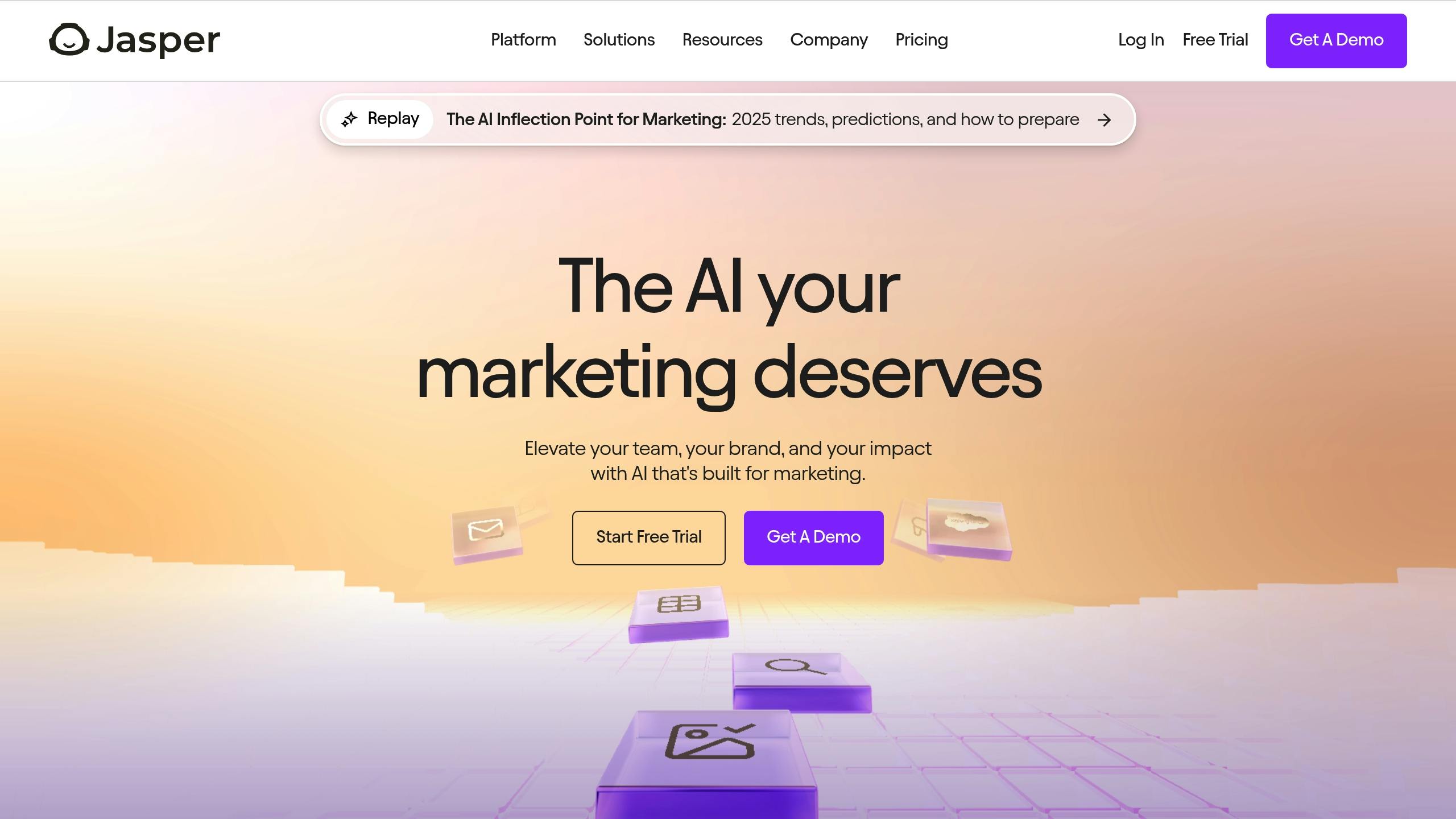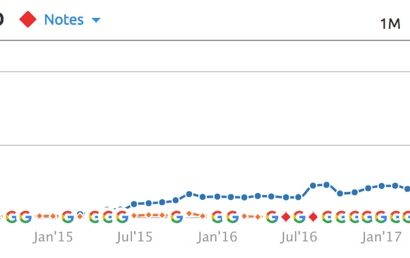Provide me some basic information about you and your business,
I'll review your details and get right back to you.

Explore essential SEO strategies tailored for e-commerce growth in 2025, focusing on voice search, AI tools, and local optimization.
SEO is essential for standing out in today’s competitive e-commerce market. This guide covers 7 proven strategies to boost your rankings, attract traffic, and increase sales. Here’s a quick look:
These strategies are tailored for 2025’s SEO landscape, helping you stay ahead of trends like mobile-first indexing, AI-powered search, and voice search.
Quick Overview:
| Strategy | Focus | Priority |
|---|---|---|
| Voice & Visual Search | Keywords, image optimization | High |
| AI Tools | Content creation, keyword research | High |
| Technical SEO | Mobile optimization, page speed | Critical |
| Product Content | Guides, videos, product details | Medium |
| Backlink Building | Influencer outreach, press kits | Medium |
| Local SEO | Google Business, local schema | High |
| Data-Driven Decisions | Metrics tracking, user behavior analysis | Continuous Process |
Start implementing these tactics to boost your e-commerce visibility and drive organic growth.
With more US consumers turning to voice and visual search, fine-tuning these strategies can help boost e-commerce performance.
Voice search queries tend to be longer and more conversational, mimicking natural speech patterns. To optimize for voice search, focus on:
For product pages, ensure you include key details like:
As platforms like Google Lens and Pinterest Lens grow in popularity, optimizing for image search can help your products stand out. Focus on these elements:
Schema markup helps search engines better understand your content. Use these types to enhance your product visibility:
1. Product Schema
Include details such as brand name, product name, price, availability, description, reviews, ratings, and SKU or other identifiers.
2. Offer Schema
Highlight offer details like price, currency, availability, condition, promotion dates, and shipping options.
3. Review Schema
Add markup for customer reviews, including rating values, total review count, individual reviews, and author information.
These strategies lay the groundwork for further improvements, including using AI to create or refine your content.
AI tools are transforming how businesses scale product content. With the AI content creation market projected to hit $1.3 billion by 2028, using these tools wisely can boost your SEO performance.
AI-powered platforms simplify keyword research by generating semantic keyword variations, uncovering long-tail opportunities, and analyzing competitor keywords. This helps you create content that’s both targeted and effective.

Jasper.ai, priced at $69/month for the Pro plan, is designed for creating SEO-optimized content. When paired with other optimization tools, it strengthens your keyword strategy by:
AI tools like Jasper.ai also go beyond content creation, making tasks like meta tag production more efficient.
Creating meta descriptions manually for thousands of products is time-consuming. AI tools can handle this task quickly while following SEO best practices. These methods ensure consistent optimization across your content.
| AI Tool | Use Case | Price | Key Feature |
|---|---|---|---|
| Hypotenuse.ai | Large catalogs | $150/month | Brand voice training |
| Copy.ai | Marketing copy | $29/month | Advanced algorithms |
| Team-GPT | Collaboration | $20/user/month | Model flexibility |
Tips for AI-Generated Meta Tags:
As Iliya Valchanov, CEO of Team-GPT, explains, AI can quickly produce accurate, SEO-friendly product descriptions.
While AI speeds up content creation, human oversight is still crucial. Here’s how to maintain quality:
Technical SEO lays the groundwork for your e-commerce site’s visibility in search results. With mobile commerce expected to hit $1.804 trillion in revenue, fine-tuning your site’s technical setup is key to tapping into this growing market.
Did you know a one-second delay in mobile load time can slash retail conversions by 20%? Improving your site’s speed is a must. Here are some practical steps to get started:
Kevin Jones, SEO and Content Marketing Manager at BigCommerce, says: “Mobile SEO is all about making your site easy to crawl so Google can easily understand its content and serve the correct pages to users.”
But speed isn’t the only factor. A smooth mobile experience is just as important.
With smartphone users checking their devices an average of 47 times a day, mobile optimization is no longer optional. Thanks to Google’s mobile-first indexing, your mobile site plays a major role in determining your rankings.
Brandon Chatham, owner of NatoMounts, highlights: “Mobile now drives most site traffic and demands primary focus.”
Brands like Cowboy and Sephora have nailed mobile navigation by using clean menus, clear text, and easily accessible CTAs. To follow their lead, focus on these essentials:
Create product content that not only grabs attention but also convinces shoppers to buy. Focus on highlighting benefits and using engaging stories that appeal to both customers and search engines.
Shoppers want detailed buying guides that help them make smart choices. In fact, 71% of B2B buyers rely on blog content during their decision-making process. Strong guides often include:
For example, a leading skincare brand uses storytelling and customer testimonials in their guides to showcase how their products can improve users’ lives. Pairing these guides with engaging video content can make them even more effective.
Video content can significantly increase e-commerce sales. After watching a product video, 73% of customers are more likely to make a purchase. The most effective videos include:
Elf Cosmetics takes this to another level by featuring user-generated videos and testimonials on their product pages. Considering that online videos reach 92.3% of internet users globally , investing in high-quality videos is a smart move. Keep videos short, include clear product demos, and feature real customer feedback to build trust. Professional production and keyword optimization can help your videos stand out even more.
“The key to persuasive writing is to understand your audience and tailor your message to resonate with them.” – Neil Patel
Backlinks play a key role in e-commerce success. In fact, top-ranked search results typically have 3.8 times more backlinks than those in positions 2–10. Below are strategies to help you earn backlinks that not only boost your authority but also drive targeted traffic.
Creating content that grabs the attention of journalists can help you earn valuable backlinks. A well-organized press kit is essential and should include:
Big brands like H&M and Fabletics showcase the impact of strong press content. H&M’s newsroom covers topics like partnerships and store openings, while Fabletics emphasizes media coverage and founder Kate Hudson’s role, making their stories more appealing to journalists.
To increase your chances of press coverage, try these steps:
Additionally, working with influencers can amplify your backlink strategy and introduce your brand to new audiences.
Collaborating with influencers can dramatically boost visibility. Research shows it can increase content exposure by 561% and website traffic by 200%.
Take Uber, for example. Their partnerships with Pandora and Spotify not only earned them backlinks but also landed them coverage in major outlets like BBC and Business Insider . This highlights how influencer collaborations can lead to both direct backlinks and broader media attention.
Here’s how to approach influencer partnerships effectively:
“Digital PR is taking over, with AI search on the rise. Brand mentions are becoming more valuable as the way users search evolves. While having quality links pointing to your website is important, brands also need to establish a strong DPR strategy. With that in mind, you’ll be producing quality content that attracts backlinks while getting your brand name quoted (even without a link sometimes). This way, you can rank more frequently in AI search results, not just in organic Google results.”
– Kliment Stamenkov, SEO Manager at DesignRush
Creative campaigns can also help. For instance, Moo Jersey’s ice cream contest not only engaged their audience but also earned them valuable local and industry backlinks.
“It seems that search engines are getting smarter at spotting malicious practices, such as buying hundreds of irrelevant links from poor-quality sites. In the best scenario, these low-quality links will be ignored by Google, and in the worst case, they can negatively affect your site. All the SEO experts I spoke to this year underline that a single backlink, but one that truly improves user experience and gets real clicks, is worth a thousand backlinks that don’t add any value. This was confirmed by Google’s ranking docs that leaked in the summer.”
– Natalia Toth, Head of Marketing at Ranking Raccoon
Focus on building authentic relationships and creating value to secure backlinks that truly make an impact.
Boost your e-commerce efforts by focusing on local search optimization. A strong local presence can make a big difference – consumers are 2.7 times more likely to trust businesses with a complete Google Business Profile (GBP) .
An optimized GBP can lead to impressive results: 520% more calls, 2,717% more direction requests, and 1,065% more clicks. These numbers show how it can drive both online engagement and foot traffic.
Here’s how to make your GBP work harder for you:
“When you reply to reviews, it shows that you value your customers and their feedback.” – Google
Beyond reviews, structured data is a critical part of local SEO.
Schema markup helps search engines understand your business locations, improving local visibility. JSON-LD is the recommended format for implementing local business schema.
Here’s what to include in your schema:
For businesses with multiple locations, apply LocalBusiness markup on both your homepage and individual location pages. Use Google’s Rich Results Test to ensure everything is formatted correctly.
The table below highlights the impact of key schema elements:
| Schema Property | Impact on Local SEO | Implementation Priority |
|---|---|---|
| Store Hours | Affects “Open Now” filters | High |
| Location Coordinates | Improves map visibility | High |
| Product Availability | Drives store visits | Medium |
| Department Info | Enhances navigation | Medium |
| Special Offers | Increases click-through rates | Medium |
Use GBP Insights to track your local SEO performance and monitor important metrics.
Effective SEO strategies rely heavily on analyzing data and tracking performance metrics. Research shows that top-performing e-commerce brands monitor an average of 5.2 KPIs to fine-tune their efforts.
Predictive analytics can help uncover trends and pinpoint opportunities. Key metrics to focus on include:
| Key Metric | What to Track |
|---|---|
| Click-Through Rate (CTR) | Engagement from organic searches |
| Conversion Rate (CR) | Sales driven by organic traffic |
| Revenue Per Visitor (RPV) | Revenue generated per user |
| Average Position | SERP ranking performance |
| Bounce Rate | Quality of user engagement |
Take Time4sleep, an online retailer specializing in beds and bedroom furniture, as an example. By analyzing product page data, they identified areas for improvement and made targeted changes, leading to a 63% boost in conversion rates. These metrics provide a solid foundation for understanding how users interact with your site, setting the stage for deeper insights.
Pair forecasting with real-time user interaction analysis to refine your SEO approach. Tools like Hotjar and Crazy Egg offer insights through heatmaps, session recordings, and conversion funnels.
“We love Feedback because it gives us instant feedback from shoppers. It doesn’t interrupt the checkout flow, and it allows us to fully understand our shopper’s experience, in real-time. This helps us study performance trends and identify shopper concerns.”
– Noelle Smith, Conversion Analyst, eShopWorld
For example, Intelliquip used Hotjar Session Recordings during a website launch affecting 10,000 users. They quickly identified and resolved a navigation issue that could have led to significant revenue loss.
Here are some key behavior metrics to watch:
| Metric | Purpose | Impact on SEO |
|---|---|---|
| Time on Page | Measures content engagement | Affects ranking factors |
| Page Depth | Tracks navigation patterns | Helps optimize site structure |
| Exit Pages | Evaluates content impact | Guides content improvements |
| Mobile Usage | Highlights device preferences | Drives mobile optimization |
| Search Queries | Reveals user intent | Refines keyword strategies |
Visual content is also crucial. Studies show that 60% of shoppers look at images before making a purchase, and by 2025, 42% of U.S. consumers are expected to use AR while shopping online. Use this data to prioritize visuals and emerging tech in your strategy.
E-commerce SEO requires a well-rounded approach. Below is a framework highlighting the main focus areas and their importance:
| Strategy | Focus Areas | Priority |
|---|---|---|
| Voice & Visual Search | Conversational keywords, image optimization | High – 142M voice users projected |
| AI-Powered Content | Keyword research, automated meta tags | High – Changing SERP trends |
| Technical SEO | Mobile optimization, Core Web Vitals | Critical – 44% mobile sales forecast by 2025 |
| Product Content | Buying guides, video content | Medium – Boosts engagement |
| Quality Backlinks | Press releases, influencer outreach | Medium – Builds authority |
| Local Search | Business profiles, schema markup | High – 46% of searches have local intent |
| Data-Driven Decisions | Performance tracking, user behavior | Continuous process |
These strategies serve as a strong starting point for improving your e-commerce SEO efforts.
SEO is constantly changing, and keeping pace with trends is crucial.
“SEO is evolving faster than ever, with AI-powered search and shifting SERP dynamics redefining how brands compete for visibility.” – Rebecca Brosnan, SEO Content Writer at seoClarity
Here are key actions to stay ahead:
With organic traffic accounting for around 33% of all e-commerce visits, refining your SEO efforts is a must.
Enhance your SEO strategy by utilizing demographic segmentation methods tailored to age, gender, income, education, and location.
Everyone loves a good case study, especially in SEO. Unfortunately, most SEO “case studies” are filled with fluff and B.S., this one is different.



